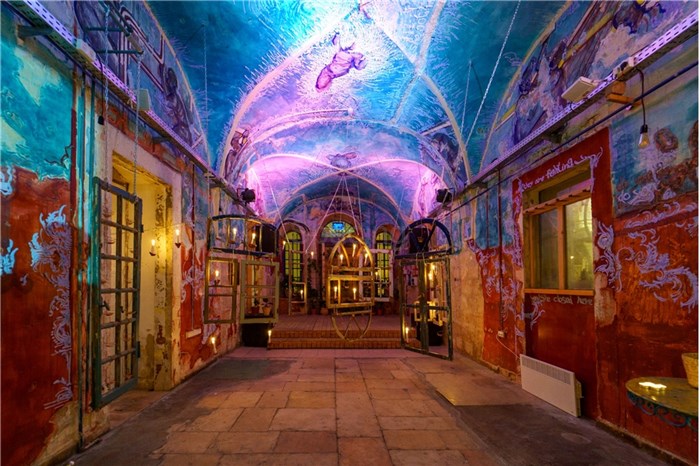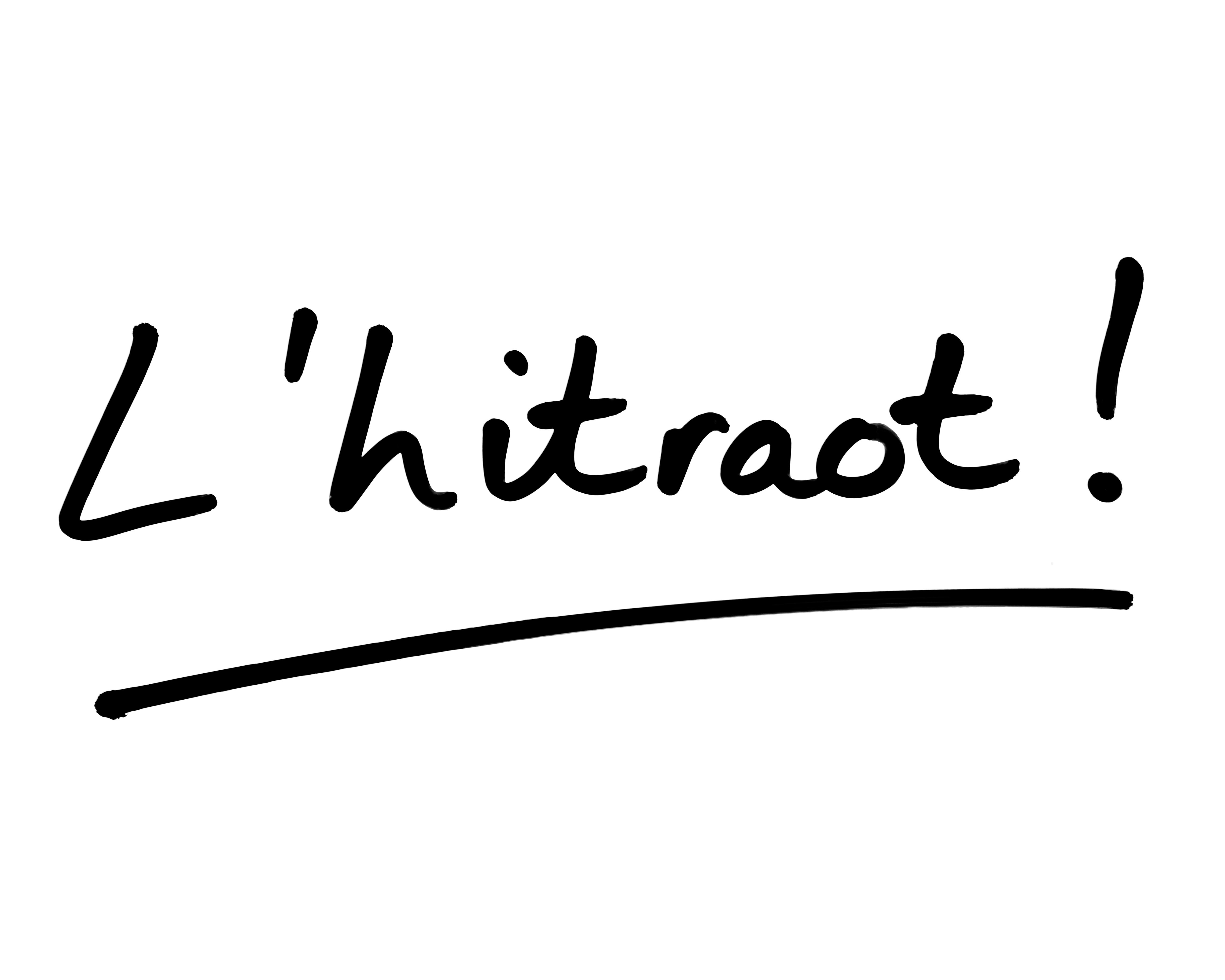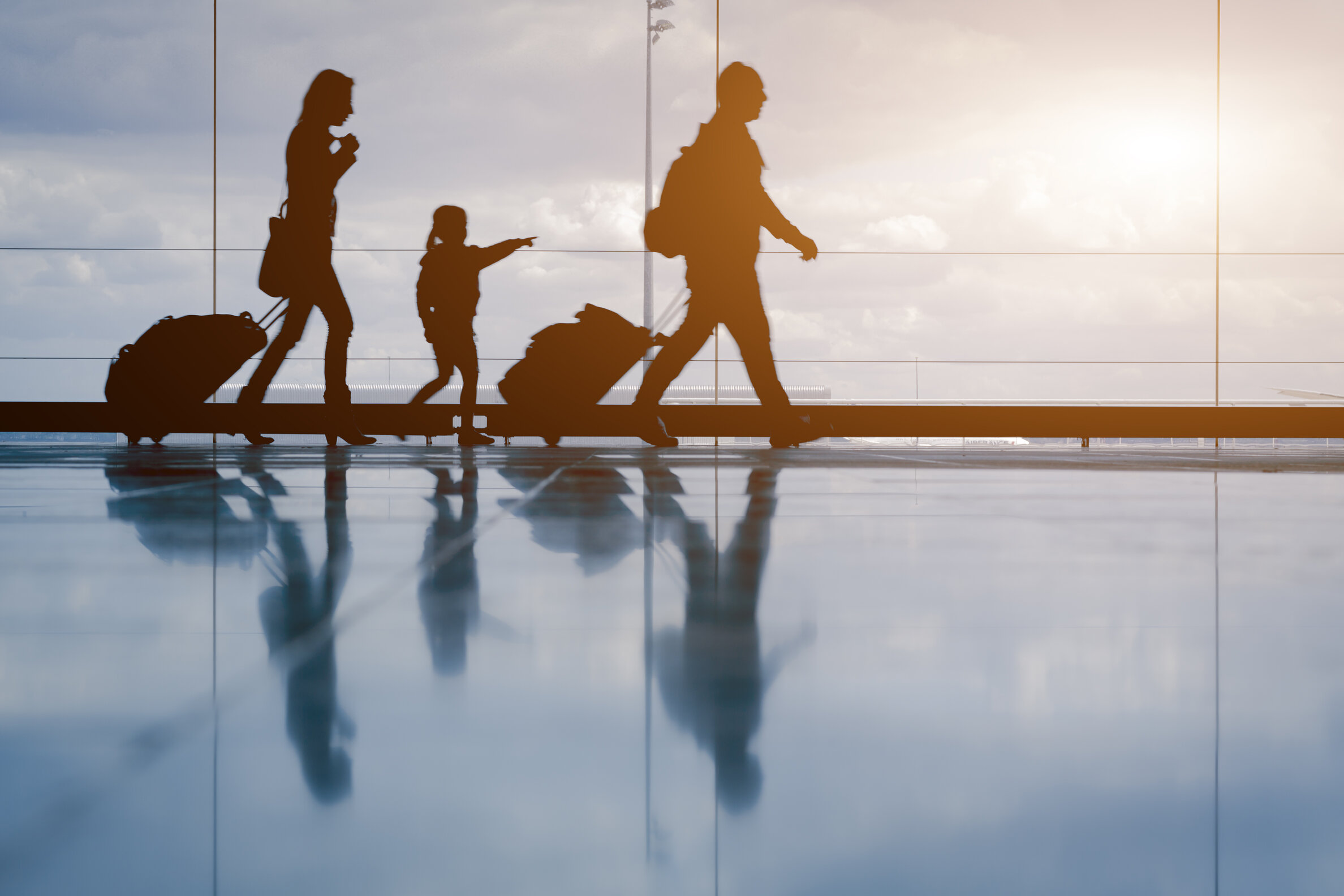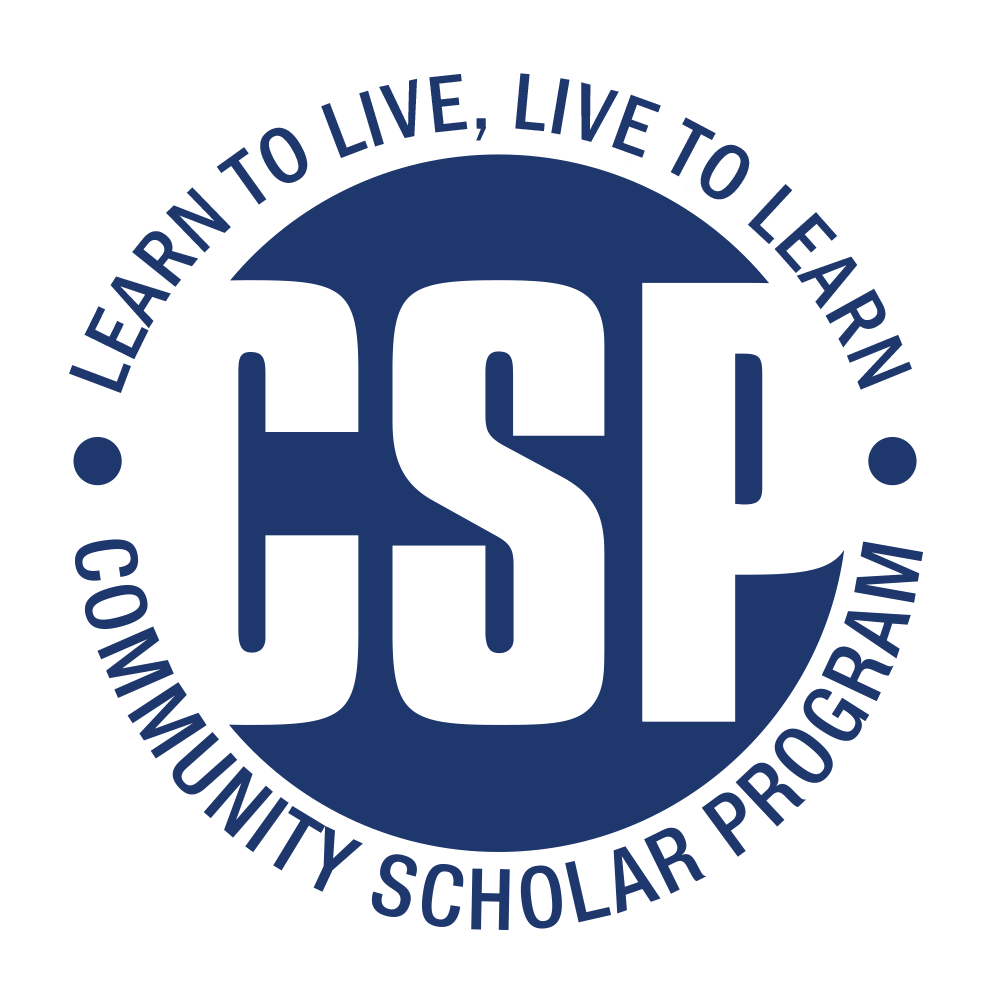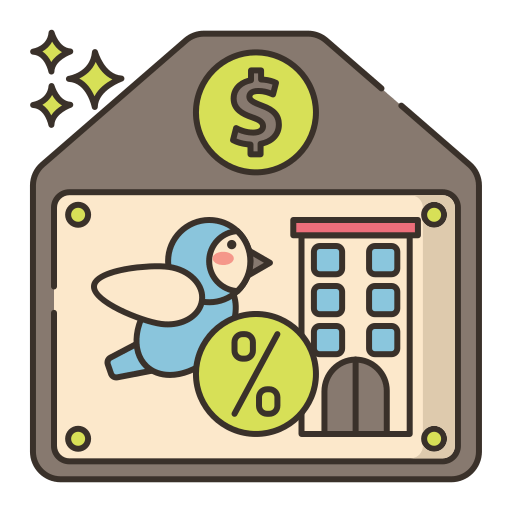THE ITINERARY IS SUBJECT TO CHANGE DUE TO UNFORESEEN CIRCUMSTANCES AND AVAILABILITY
Join us for an unforgettable artistic and cultural ART-venture in Israel, led by artist Shirel Horovitz. From the captivating grass-root art movement in Nahariya to the harmonious fusion of Jews and Arabs in a musical tour of Jaffa and a walking tour of some of the most vibrant galleries of Tel Aviv, immerse yourself in the captivating narrative where Israel’s story intertwines, clashes, and illuminates through art. Engage with a diverse community of artists, writers, musicians, chefs, curators, tattoo artists, indie-fashionistas, and grass-roots art organizations, as we explore the profound connections between Israel’s rich culture and its vibrant art scene. Limited to a group size of 25, this 9-day adventure includes daily breakfasts, 2 lunches, and 7 dinners, all covered in the package price of $6,500 PP/double occupancy (with a $1,900 surcharge for singles). There is an early-bird discount of $100 PP (Valid until June 20, 2023). Don’t miss this once-in-a-lifetime opportunity to discover Israel like never before.
TOUR LEADERS
Artist and scholar Shirel Horovitz: Through sculpting, drawing, and sound, Shirel Horovitz’s installations and performances explore the relations between cities and communities. She earned her BFA from Bezalel Academy of Art and Design, her MA from the Interdisciplinary Art Program at Tel Aviv University, and has been studying and practicing Zen-Buddhist inquiry meditation since 2007. Her works have been exhibited in museums and galleries across Israel and the US. For the past two years Shirel has been part of CSP joining Arie Katz both behind the scenes and as host while continuing to be one of CSP’s favorite teachers. In 2023 Horovitz was the first artist in residence of the Weisman art grant of the Jewish Community Foundation of Orange County. Shirel we’ll be on the bus with us for the whole trip taking us behind the scenes and weaving the story of the arts with the story of the country.
Super Tour Guide and CSP favorite Gila Levitan
Originally from Sydney, Australia, Gila moved to Israel 17 years ago. In Australia, she was involved in the Zionist Youth movements and spent a year in Israel between high school and university which helped build the foundations for her love and support of this unique little country. After moving to Israel in 2005, she pursued her career in Physiotherapy however, eventually, she decided to become a licensed tour guide to pursue her passion for exploring and traveling around Israel. Gila is very curious and likes to know all the little details, which may be why she loved working in research, but she also loves people, and being a guide enables her to teach people about a place that she loves and helps them on their own path of discovery about all the treasures that Israel has to reveal. Gila is the only female guide in the top 10 on TripAdvisor and awarded the TripAdvisor Certificate of Excellence. Gila was our guide on our most recent Israel adventure, and we’re excited to have her back!
For your convenience, a detailed registration form will be sent separately in August. You will be able to specify pre-arrival, transportation requests, etc. in the form.
Highlights
Itinerary
1 - Sunday ( May 19 ) : THE ART-VENTURE BEGINS
vActivities:
-
Pick up at Ben Gurion Airport - Arrival at Ben Gurion International Airport. Our representatives from Via Sabra will be on hand to assist with all formalities and ensure your journey has the smoothest of starts. In the alternative, we will arrange a pick-up at the Zichron Yaakov train station {or meet us at the hotel}.
-
Drive to Zichron Ya’akov and check in to the Elma Arts Hotel - Zichron Yaakov is one of the first ‘modern’ settlements in Israel. Located upon Mount Carmel, with magnificent views across the Coastal Plain to the Mediterranean, the town was founded in 1882 by 100 Jewish pioneers, returning to their Biblical homeland from Romania. Today, the town is a big tourist center – its quaint main shopping street is lined with cafes that sit alongside historic buildings, while the town is also famous for the Carmel Winery, one of Israel’s top vineyards.
Elma is a hotel and arts complex that uniquely combines luxurious hotel accommodation with the best in international music, plastic and performing arts. Spanning more than 100 acres, Elma stands on the edge of the Carmel ridge, overlooking a spectacular view of the Mediterranean coastline and a green patchwork of fields and wooded slopes. The historic building is considered one of Israel’s architectural highlights, and won its designer, Yaacov Rechter, the Israel Prize in Architecture. After years of use following its inauguration in 1968, the magnificent building was gradually abandoned, to a point where it was scheduled for demolishing. It was at that point that Lily Elstein, a scion of the founders of Zichron Ya’acov, came to its rescue. Like her pioneer ancestors, who founded the village a hundred and forty years ago, Ms Elstein decided to undertake a pioneering mission of her own: to breathe life in the abandoned building and transform it into a hotel and arts complex. Ms. Elstein acquired the place in 2005 and founded Elma. -
Afternoon options on own, for those who arrive early, include:
-
Explore Main Street, "Rehov Ha-Meyasdim" (also known as “Derekh HaYayin”). Spend time at The First Aliyah Museum. Pre-book and enjoy a spa treatment at the highly rated Elma Arts Spa.
-
Meet in the lobby at 5:00 PM for an art tour of the Elstein Galleries located in the hotel.
-
Festive Opening Dinner - Opening dinner and group welcome at Oratorio Restaurant, 6:30 PM.
-
7:34 p.m. Sunset
-
Elma Hotel
2 - Monday ( May 20 ) : ART AND COMMUNITY IN THE PERIPHERY
vSince its founding, the art culture of Israel has been one of change. When Israeli arts started out it was a lot of immigrants mostly from Europe at the time. “Really, the way to decide what Israeli was at that time was to say what it wasn’t,” Michal explains. There was a lot of rule-breaking in terms of traditions. Modern Israeli artists were turning away from what they learned in art schools and experimenting.
Activities:
-
5:38 AM Sunrise
-
Breakfast at the hotel - Breakfast at an Israeli hotel is an experience in itself. Start the day with a bounteous buffet at Elma. If kanafeh is on the menu, don’t miss it!
Kanafeh is a traditional Middle Eastern dessert made with spun pastry called kataifi, soaked in sweet, sugar-based syrup, and typically layered with cheese, or with other ingredients such as clotted cream, pistachio or nuts, depending on the region. -
Morning Program:
-
Dancing Workshop with Kibbutz Contemporary Dance Company (KCDC) - Visit the International Dance Village which is a home to over 80 dancers from Israel and from abroad. Get a behind-the-scenes look and enter the world of a professional dancer and dance company. Participate in a dancing workshop with the company dancers.
-
Drive to Naharia
-
Meeting and art workshop with Tnu’at Tarbut (Culture Movement) - Tour the street gallery founded by Tnu’at Tarbut to understand the relationship between culture, gentrification and reclaiming of a place. The tour will include an art workshop.
-
Lunch on own in Nahariya
-
Drive to Haifa
-
Afternoon Programs:
-
Art, Gentrification and Street Culture - After lunch, we’ll meet with Arbelle Shtainer (aka HOLY ERA), an independent artist based in Haifa, Israel. Her work spreads over several mediums such as drawing, murals, animation, tattoos and more. We’ll meet Arbel at Haifa’s Flea Market to see her large-scale mural and continue with her to her studio in the Pyramida Center to discuss her work and inspiration including themes such as the everyday human struggle, politics, the female gaze, nature, and the simplicity of life.
-
Exploring A Mixed City - We’ll continue our journey in Haifa with a visit to Beit Hagefen, where after enjoying the interactive multimedia exhibition we’ll meet Yael Messer, the curator, to hear about the vision, struggles, and successes of this space.
In the new wing of Beit Hagefen, spread across an entire floor, are activity stations for exploring familiar questions and new aspects about identity and belonging in a multicultural society. Visitors are invited to get involved in the content and adapt it to their own unique story. This is an opportunity for an encounter with experiences, memories, and stories, some familiar and some completely new, about us and about others. -
7:35 p.m. Sunset
-
Dinner: Rola Restaurant - The best of local Arab cuisine (fish and vegetarian dishes). Rola continues to surprise with its authentic Arab cuisine, a juxtaposition of spices and flavors that complement each other, and the hummus, bound to please the most experienced of gastronomes. The richness of flavors here will woo you while the attention to detail and creativity in every bite make this place a favorite among locals and visitors alike.
-
Elma Hotel
3 - Tuesday ( May 21 ) : CONNECTION AND ESTRANGEMENT: THE ART OF TWO NARRATIVES
vIsrael is relatively young. The state of Israel was created in 1948. Many of its founding artists were not born in Israel. They emigrated from other countries—mostly European after World War II.
Activities:
-
5:37 AM Sunrise
-
Breakfast at the hotel - Arrive early to calmly enjoy another amazing Israeli breakfast before we set out on our adventure up north.
-
Morning Programs:
-
The Art of Zionism – Mishkan LeOmanut, Ein Harod - We set off on a one-hour bus ride inland to enjoy a visit to the Mishkan Museum of Fine Art in Kibbutz Ein Harod (one of the largest and most important museums in Israel’s periphery, with a panoramic view of the Jezreel Valley and Mount Gilboa). At the museum we’ll meet with the Curator Yaniv Shapira, enjoy the exhibitions and explore how the story of Kibbutz Ein Harod and the art are intertwined with the history of the state and how shifting narratives of both Kibbutzim and the art world meet in this unique building.
Mishkan Museum of Art, the first rural museum in Israel and the first museum run by a kibbutz, started out in 1937 as an “Art Corner” in a small wooden shack used as the atelier of Kibbutz Ein Harod member, the painter Haim Atar (1902-1953) – the museum’s visionary and founder. The first section of its permanent building was inaugurated in 1948. The building, planned by the architect Samuel Bickels (1909– 1975), is known for its marvelous simplicity and quality, characterized by the proportions of its galleries and its unique and original exploitation of natural lighting. The moving spirit in establishing the museum was Aharon Zisling, a member of Kibbutz Ein Harod. Fourteen galleries, as well as open air sculpture patios, a library, and a workshop/studio were gradually built in the spacious building. At the height of the construction process the split in the Kibbutz Meuhad movement occurred, in the course of which Ein Harod split into two kibbutzim: Ein Harod Ihud and Ein Harod Meuhad. In an exceptional way, the museum was kept as a joint institute of both kibbutzim, and the museum area became a place where members of both kibbutzim meet and share experiences together. -
Afternoon Programs:
-
Lunch in Umm El Fahm art gallery with food from the women of Al Sabar initiative
-
Visit Umm El Fahm art gallery, tour exhibitions and meet director Saeed Abu Shakra at the Umm El Fahm Art Gallery - The Umm el-Fahm Art Gallery was founded in 1996 on the initiative of local residents and artists who wanted to bring quality contemporary art to the city and to exhibit original Arab and Palestinian art. The gallery has become an important social and cultural meeting place and has been established as an important center in the local and international culture scene.
Said Abu Shakra, b. 1956 in Umm el-Fahem, is an artist, graduate of the Midrasha Art Academy and founder of the Art Gallery in Umm el-Fahem and of the historical and photographic archive of the Wadi Ara region. He’s also the visionary behind the idea of founding the first Arab Museum for Contemporary Art in Israel. Abu Shakra, born into a family of prominent artists, has exhibited in solo and group exhibitions in Israel and around the world. In 2012 he received the Order of the Arts and the Letters award from given by the French government. Read about Said Abu Shakra's Dream of a Palestinian Art Museum in this Link. -
Bat Shlomo Winery - Taste wine and hear the incredible story of the Bat Shlomo Winery and settlement, founded by Baron Edmund de Rothschild.
-
7:36 PM Sunset
-
Dinner on own in Zichron Yaakov
-
Elma Hotel
4 - Wednesday ( May 22 ) : Transitions and narratives - music and literature
vConsidering the intricacies of the region’s context, there is a strong theme in Israeli art around the question of identity and sense of self. According to Michal Freedman, co-founder of Art Source, “Artists are exploring issues of new identity and finding new ways to answer that question with art.”
Activities:
-
5:37 AM Sunrise
-
Breakfast at the hotel - Try something new from the buffet!
-
Checkout from hotel
-
Morning Programs:
-
Caesarea National Park - On the Mediterranean coast, Caesarea National Park is one of Israel’s most impressive archeological sites. Here, amazing ancient harbor ruins, beautiful beaches, and impressive modern residences sit side-by-side. The city was initially built by King Herod in the 1st century BC, who dreamt of a major seaport to connect the Province of Judea with Rome. For this purpose, the king's men designed an entirely artificial harbor that was in use for about a millennium. Caesarea became a central city in Roman and Byzantine times as can be seen from the massive archeological remains on site. View the spectacular Roman amphitheater, still used today as a performance venue, as well as the hippodrome that held 20,000 spectators for chariot races.
-
Ralli Museums in Caesarea - The Ralli Museums in Caesarea are part of five Ralli Museums in the world, an institution founded by Harry Recanati. The main aim of the museums is to disseminate contemporary Latin American art. The museums were dedicated to the memory of the Jews expelled from Spain and Portugal during the Inquisition and of the Jewish community of Thessaloniki, which was almost completely exterminated in the Holocaust.
-
Discover the Bird Mosaic located in a public park in Caesarea - The mosaic was originally part of a large 6th century mansion. In 1955, archaeologists excavated a hilltop 500 meters outside of the Byzantine city wall in Caesarea. A large mosaic floor was discovered dating from the 6th Century CE.
-
Continue to Tel Aviv
-
Lunch on your own at the Jaffa Flea Market - Wind your way through the Flea Market which features everything from antiques to hip new clothing and design stores, cafes, restaurants, and bars.
-
Historical-Artistic-Identity Tour of Jaffa - One of the most complex places to tour, Jaffa’s rich history culminates with the clashes of culture, religion, economy, and nationality from a troubled present. We’ll tour Jaffa with System Ali Hip Hop Band who will take us on this historical-artistic-identity journey traversing 5,000 years, five neighborhoods, five languages, and countless sources of inspiration. The tour combines the history of the city of Jaffa with a discussion of the city’s conflictual issues in recent decades through original textual and musical works performed on-site by System Ali’s artist guides. In addition to Jaffa’s history, the artists share personal histories and stories, interwoven with performed songs by the Hip-Hop crew. The tour culminates in an open conversation between the artist guides and the participants.
-
7:35 pm sunset
-
Tel Aviv as a Jewish City, Tel Aviv as an Israeli City…Tel Aviv as a City of the World - Dinner with Rachel Korazim at her home in Jaffa - Dr. Rachel Korazim is a powerful speaker and a freelance Jewish education consultant specializing in curriculum development for Israel and Holocaust education. She is involved with Jewish education worldwide, creating and implementing in-service training programs for educators, writing educational materials, counseling, and teaching. As one of the founders and directors of a special program for Israeli soldiers from disadvantaged backgrounds, she was responsible for creating the educational framework and training teachers for the implementation of the program. Born in Israel, she served in the I.D.F. as an officer in the central training base for women and was later a member of the I.D.F. delegation to Niger (West Africa). She is a graduate of Haifa University with a Ph.D. in Jewish education.
-
Check into the Drisco Hotel - The historical location of The Drisco Hotel is in the center of the picturesque and pastoral American – German colony in Tel-Aviv which was established in 1866, with a quiet and pleasant environment surrounded by beautiful houses which were restored by an artist. The George and John restaurant, headed by chef Tomer Tal, located in the heart of our luxury hotel, have won the title "the best restaurant in Israel" and made it into the top 6 in the ranking of the best restaurants of "Middle East & North Africa's 50 Best Restaurants" of 2023. You can also find throughout the hotel other lovely sites; the lounge – which is decorated with original historical murals painted in 1925, a pleasant rooftop terrace – overlooking to the beach of Tel – Aviv, an amazingly beautiful patio – were you can enjoy a fine breakfast, fully equipped gym, spa treatment rooms, well maintained garden and more.
-
Drisco Hotel, Tel Aviv
5 - Thursday ( May 23 ) : From art to design and fashion
vThere are two epicenters for art in Israel—Tel Aviv and Jerusalem. Tel Aviv has been dubbed Israel’s “cultural center” hosting most of the country’s art galleries, and Jerusalem is home to the prestigious Bezalel Academy of Art and Design. The concentration of artists in these two cities means that multiple generations can inform each other in their creative process.
Activities:
-
5:39 AM Sunrise
-
Breakfast at the hotel
-
Morning Programs:
-
Tel Aviv Museum tour with Shirel Horovitz and meeting with Curator of Israeli Art - Dalit Matityahu - From the vision of Tel Aviv’s first Mayor in 1932, through a variety of buildings and locations, Tel Aviv Museum of Art is a world-class museum showcasing both Israeli and international artists and boasting two connected buildings each celebrating its era – the older wing founded in 1970’s with its brutalist architecture and the new one inaugurated in 2011 showcasing award-winning architecture of the 21st century. Our tour of the museum will focus on the Israeli collection showcasing local art from the beginning of the 20th century until today and revealing both the meeting and departure points between the Zionist narrative and founding of the state, the local art scene, and the international art world. Following the tour, we’ll meet the Curator of Israeli Art - Dalit Matityahu to hear about her vision and challenges. There will be optional additional time on own in the museum to see more of the exhibitions.
Dalit Matityahu is the Senior Curator of Israeli Art at the Tel Aviv Museum of Art. Matityahu, was born in Jerusalem, in 1969. Graduated from the Faculty of Arts - Hamidrasha in 1993 with a Bachelor's degree and Master's degree in Hebrew Literature at the University of Haifa. Since 2010 she has served as curator of the Department of Prints and Drawings, Tel Aviv Museum of Art, and in 2017 was appointed senior curator of Israeli art in the museum. She has published numerous articles on Israeli and international art in journals and catalogs. -
Lunch on own in Gan Hachashmal - With a recent past that saw it labeled as one of Tel Aviv’s most rundown neighborhoods and home to a gay underground scene, Gan HaHashmal (translated it means Electric Garden, due to the fact that it also hosted a power plant back in the 1920s) has over the last few years transformed itself into one of Tel Aviv’s hippest neighborhoods (in fact it has just been named as one of the world’s sexiest ‘hoods – and even the UK’s The Telegraph have been won over!). This part of town has been the subject of a revival and has become exceptionally popular with the city’s indie-fashionistas who have moved in and claimed this as the city’s coolest place to live, work, and party. The presence of the area’s tell-tale boutiques offering unique designer fashion items has fast become the hallmark of this area. One of the most recent additions to the ‘hood is Kuli Alma (kulialma.com), a music and arts-focused institution which looks like bringing even more hipness and sexiness to this area. Basically every 4 steps there’s a café, restaurant, or a great sandwich place to enjoy. We’ve included three recommendations below to get your appetite up and give an idea of the variety that exists within this one block of the city.
-
The Importance of Fashion - Yalla! After lunch, we set off to understand how Israeli identity has changed over the years by learning about the evolution of Israeli fashion with the help of Merav Shami. During the tour, we will visit local fashion and design brands and meet designers who use ancient crafts and other professionals who use the best modern technology.
Merav was born and raised in Tel Aviv, and since she was a little girl, she was always passionate about fashion. Merav took several courses in fashion and styling both in Israel and Italy and writes a fashion blog on Israel’s biggest women’s website. Merav believes fashion is about personal experiences and creating encounters that celebrate the Israeli fashion scene through meeting people, hearing their stories, and being introduced to their products. -
Holon Design Museum - The city of Holon, adjacent to south Tel Aviv, is home to the Design Museum, the first museum in Israel dedicated to design. The building of the museum was planned and designed by Israeli architect and industrial designer Ron Arad in cooperation with Bruno Asa and is located in the eastern part of the new culture area of Holon that includes the Médiathèque (central library, theater, cinémathèque). Nearby is the faculty of design at the Holon Institute of Technology. The museum opened on 3 March 2010 and was noted by the travel magazine Conde Nast Traveler as one of the new world wonders. At the museum, we’ll start with the building itself which is internationally seen as one of the most original architectural achievements of the beginning of the 21st century, followed by visiting the contemporary exhibitions.
-
7:36 Sunset
-
Dinner and music at 416 Vegan Restaurant - 100% vegan and all locally made, 416 is one of the most talked about vegan restaurants in the city that is considered heaven for vegans. The location, atmosphere and food will give you a true taste of the city’s unique vibe.
-
Drisco Hotel, Tel Aviv
6 - Friday ( May 24 ) : VISION AND REALITY
v“There’s so much creativity happening here for such a small place. Sometimes we have to remind ourselves that everything here is new. The country is young. People are exploring. The art market is a new and exciting market for people coming from other places in the world. The politics of the region leads itself to some very interesting art,” shares Michal Freedman, co-founder of Art Source.
Activities:
-
5:38 AM Sunrise
-
Breakfast at the hotel
-
A Visit to Levinsky Market. - During the 1930s, Tel Aviv was home to a small group of Jews from Saloniki, Greece. David Florentin was considered the leader of the group which, together with his pioneering activities for developing the city, earned him the nickname 'David Palestina’. Most of the working-class immigrants settled in the southern Tel Aviv neighborhood now-called Florentin, after David Florentin’s nephew Solomon Florentin, who was the first contractor in the area. Before long, a range of spice shops and eateries opened up across the neighborhood, specializing in Balkan cuisine - and that’s how this marketplace came to be what we know today. Legend even has it, that the first spice blends for early-State home cooking were created in, by and for these neighborhood residents. With the creation of the State of Israel, an influx of Iranian immigrants to downtown Tel Aviv brought with it new tastes and herbs from Persian cooking. And as the population grew, so did the marketplace, developing from its nuts and spice stalls into a bustling, commercial marketplace with luxury stores and gourmet restaurants. Today, the Levinsky Shuk spreads across Levinsky Street, between HaAliyah Street and Herzl Street. Like its range of culinary tastes: far-reaching. Among the stores to visit are dried fruits and nuts, bakeries, delicatessens and restaurants. Certain shops and restaurants are unique to the Levinsky Shuk. The magic of this marketplace lies in its many legendary tales of culinary growth and discovery, stories that continue to appeal to local residents and well-known chefs alike.
-
Gallery Hop - From the market, we make our way to a gallery tour in Kiryat Hamelacha. We will meet with curators to appreciate and understand not only the art itself but also the mechanisms of socio-politics and the economy behind them. Galleries include (we won’t visit all but rather a selection based on the exhibitions): Rosenfeld, Raw Art, Dvir, Maya, Binyamini Center, Art Port, Gordon, Alon Segev.
Kiryat Hamelacha was inaugurated as the light industrial area of Tel Aviv. It housed hundreds of businesses which to this day have opened and closed over the years but in the past few years, we have witnessed a change with artists and galleries taking over some of the workshops and commercial spaces and the walls becoming a canvas for street art. A couple of streets lined with factory warehouse buildings not only house small shops for metal, glass, and printing businesses but have become a new refuge over the last 10 years for young contemporary Israeli artists as well. Israel’s edgiest artists, translating their local culture to locals and to international viewers, can best be felt, seen, heard, tasted, and even smelled in this somewhat rundown district. -
Lunch on your own and time at the Nahalat Binyamin Arts and Crafts Market - Nachalat Binyamin Art Fair is the biggest and oldest in Israel, and one of the most beautiful and esteemed in the world. The art fair was established in 1988 and is open every Tuesday and Friday, as well as on holidays and “Chol HaMoed” days. The art fair spans across more than half a kilometer, through the promenade of Nachalat Binyamin and branching to the streets of Rambam and HaShomer. The Art Fair’s unique location in the heart of the hustling and bustling midtown Tel-Aviv and the special urban surroundings, which include several unique historic buildings and dozens of graffiti and street art, is a great attraction for a fun day in Tel-Aviv. All the artists participating in the art fair undergo an admissions committee and are admitted according to a permit issued by Tel-Aviv-Yafo Municipality.
The Carmel Market first opened in 1920, eleven years after the establishment of the city. It is an integral part of the history of Tel Aviv. Although much of the trade has now shifted to modern malls and the internet, the market is still immensely popular. Its narrow street is busy whenever you visit, particularly before Shabbat on Thursdays and Fridays, as residents buy supplies for their family meals. Recent years have seen a growing number of boutique stalls and food places opening alongside the traditional traders. They range from boutique beers to arrays of halva, and small eateries that take advantage of the market’s produce. The top end of the Carmel Market is traditionally focused on fashion and electronics while the lower part is mainly food and fresh produce. -
Late Afternoon Program
-
Shabbat Evening Welcome Shabbat in a Tel Aviv style - Kabbalat Shabbat at Neve Shechter with curator of Neve Shechter gallery, Bar Yerushalmi. Enjoy a pre-Kabbalat Shabbat, special visit to the gallery in the space.
-
Shabbat Dinner with Bar Yerushalmi, curator of Neve Shechter gallery.
-
7:37 p.m. Sunset
-
Drisco Hotel, Tel Aviv
7 - Saturday ( May 25 ) : SHABBAT IN THE WHITE CITY
vActivities:
-
Breakfast at the hotel - Enjoy a slower and relaxed morning with time to explore breakfast in-depth and maybe venture out for a stroll along the boulevard or on the beach.
-
Morning Programs:
-
Track 1: Walking tour- Art and Architecture - Tel Aviv has more Bauhaus buildings than any other city in the world, so many that it is designated by UNESCO as a World Heritage Site. The buildings were designed by Bauhaus architects who immigrated to Israel from Europe in the 1930s and were influenced by the work of Le Corbusier and Walter Gropius. Some 4000 Bauhaus buildings were built in the 1930s – a development which turned the city center into a quasi "open-air Bauhaus Museum" and earned Tel Aviv the nickname “White City.”
-
Track 2: Street Art in the Florentin - Walking from our hotel towards the south of the city, street art becomes more and more prominent as we approach the amazing Florentin neighborhood. Questions we will address on our afternoon graffiti art tour include: Who are the people going out at night and changing the face of the walls? What are the different styles and how are they created? What kind of story do these images and words tell us about the people living in the neighborhood? Is this art or vandalism? What role is gentrification playing? We’ll dive deep into the local scene and the story of this area.
-
Shabbat Around the World Brunch - In a private setting indulge in a variety of classic Jewish ethnic foods that are part of the Shabbat day meal. Behind every Jewish ethnic food that will be served, there is a special story about making dishes from one ingredient for a large group of people. Learn about the different ethnic groups that make Israel a culinary empire today.
-
Cocktail Workshop with Tishrey - Drink down a story of Israel! Travel to the different regions of the country through the drinks. Through local spirits, quality Israeli produce, cultural design, and Israeli innovation, meet the staff of an Israeli cocktail 'start-up' and see how they translate this into amazing cocktails. Cocktails are mixed with Israeli alcohol, fruit in season, and wrapped into the Israeli story. You’ll have a chance to learn to mix the drinks as well.
-
Return to hotel to rest or enjoy time in the City
-
7:37 PM Sunset
-
Dinner on own in Tel Aviv
-
Drisco Hotel, Tel Aviv
8 - Sunday ( May 26 ) : ONE CITY, DIFFERENT PERSPECTIVES
vSince its founding, the art culture of Israel has been one of change. When Israeli arts started out it was a lot of immigrants mostly from Europe at the time. “Really, the way to decide what Israeli was at that time was to say what it wasn’t,” Michal Freedman explains. There was a lot of rule-breaking in terms of traditions. Modern Israeli artists were turning away from what they learned in art schools and experimenting.
Activities:
-
5:37 AM Sunrise
-
Breakfast at hotel - And check-out from hotel
-
Morning program (alternating tracks):
-
Track 1: Tel Aviv New Central Bus Station Tour - Considered to be Israel's biggest white elephant, Tel Aviv's "new" central bus station houses a bat cave, abandoned movie theaters, a church, an atomic shelter, artists workshops, and a graffiti gallery.
-
Track 2: Neve Sha’anan - Located between two central bus stations - the old and the new, Neve Sha'anan is the most culturally diverse area in Israel. This is where we will discuss the differences between refugees, migrant workers and asylum seekers and what are the implications of a changing neighborhood.
-
Drive to Jerusalem
-
Lunch at Feel Beit - Feel Beit is a cultural home for creating art, expanding perspectives, and imagining new ways forward for Jerusalem. "We are a group of Israelis and Palestinians who create art and music to bridge divides in Jerusalem. Everything we present is rooted in love for the diverse people of this place. We are driven by the conviction that when all else breaks down, art and music must break through."
-
Check in to our hotel (the Orient, Jerusalem) - The Orient Jerusalem hotel, part of the Isrotel Exclusive Collection, is nestled at the heart of the German Colony, walking distance from countless cultural, tourist, and historic attractions: the First Station, Liberty Bell Park, and Mishkenot Sha'ananim, as well as charming boutiques and bistros. The Old City and the Western Wall are just 2 miles away. Guests can unwind in the rooftop pool overlooking iconic landmarks, or the indoor pool on the spa level, near the gym, saunas, and Turkish hammam. The spa also presents pampering Carmel Forest Spa treatments. The Orient Jerusalem's breakfast menu provides a unique culinary experience inspired by the city's neighborhoods and surroundings.
-
7:35 PM Sunset
-
Dinner in Machneh Yehuda Market on your own
-
Optional Late-Night Program: The Art of Machaneh Yehuda - After all the shop owners close down, a new, young alternative Machaneh Yehuda comes to life. Come with us to find out who’s responsible for the new graffiti paintings appearing every night on the shops’ shields. We will take you to see some of the most impressive street art the market has to offer on all kinds of corners. In between, we will visit a few bars that are the heart of the new and improved nightlife scene in Machaneh Yehuda market and taste different kinds of popular Israeli drinks to make sure everyone gets the night market vibe.
-
Isrotel Orient Hotel, Jerusalem
9 - Monday ( May 27 ) : HOLY CREATIVITY
vWhat does it mean to be an Israeli artist?
It’s complicated. Artist Shai Azoulay shares his experience poetically: “To live in Israel (complicated...) and to dream of other faraway places to show my work.” It seems a lot of Israeli artists educate themselves at premier art institutions like Bezalal and then travel abroad for residencies. Some return to the bustling art metropolis of Tel Aviv. Some stay abroad. For many artists around the world, their home and their culture play a pivotal part in their creative process. Their experiences inform their work whether intentional or not. But there is something about the Israeli identity—the history of political tension—that makes the experience unique.
Who is buying Israeli art?
According to Michal Freedman, about half of the Israeli art buyers are American and the other half are European. She also has Australian clients purchasing art on Art Source as well. There is also an avid community in Israel too. Many visitors to Israel have roots and connection to this country. It’s a meaningful place for them. The art thus has a meaningful place for them. Collectors are also searching for that new, exciting, and interesting thing. They want to be among the first to say, “I’ve been supporting that artist.” Israel offers those opportunities. “For non-Jews, it’s an exciting and emerging art market. The art market speaks for itself,” shares Michal.
Activities:
-
5:36 AM Sunrise
-
Breakfast at the hotel
-
Morning Programs (Choose a track)
-
Track 1: West & East Jerusalem
-
Educational Bookshop - East Jerusalem - A well-established and leading bookstore focusing on Middle Eastern culture and the Arab-Israeli conflict. The books are mostly research-based and published by highly respected institutions and publishers worldwide. It is a unique place with a book collection that covers all aspects of Middle Eastern history, culture, and politics. The bookshop's mission is to present the bright side of Palestinian culture and to build a strong, stable, and vibrant cultural hub in the city of Jerusalem.
-
Visit Museum on the Seam - A socio-political contemporary art museum, located on the geographic seam line between East and West of Jerusalem, at the meeting point of the three religions. The Museum, in its unique way, presents art as a language with no boundaries in order to raise diverse social issues for public discussion and bridge the gaps.
-
Track 2: Gallery tour in Jerusalem - Jerusalem’s art scene has its unique flavor and functions almost as the conceptual fringe of the Israeli art world boasting international events deeply rooted in local reality. We’ll tour three major art venues in the city that will allow us an in-depth encounter with the magic, challenges, and beauty of the local art scene. Throughout the tour we’ll meet founders, curators and artists to hear their unique stories in these three venues, each with an outstanding story.
-
Where Art Meets Politics And Goes To Court - Founded in July 2005 by young graduates of the Bezalel Academy of Arts and Design, Barbur Gallery is a perpetually changing project, aiming to explore the concept of the gallery and the connection between professional art and communal activity. The founders of the gallery believe in the importance of dialogue and collaboration in society as well as between artists and aspire to create a non-hierarchical, dynamic space, housing a wide array of creative and social enterprises, without the influence of the art market, fashion trends, and personal taste. In recent years the gallery has been in the headlines and fighting for its right to exist as political forces in the city have been trying to close them down to hosting a talk by NGO “Breaking the Silence”.
-
Where Art Goes Social and All the Way Home - Located in railway housing built in the 1950's by the architect Abba Elhanani, Koresh 14 Gallery represents the modernist housing from the period when Jerusalem took a break from stone architecture. Its unique character and form of construction indicate an architectural concept that takes into account the relationships of the neighbors and the community within it. The choice of building as a space for artistic and cultural occurrence is not accidental. The various facades, entrances and exits, the wandering experience it allows, as if you were lost in a huge structure with different levels, high and exposed walls, marble columns and concrete platforms. All of these are the source of inspiration for an innovative artistic space that evokes a dialogue between high art and life itself in the most private place: the home. The gallery emphasizes innovative projects and exhibitions that bridge between canonical art and young and contemporary art.
-
Where Art Takes Over Space And Goes Wild - Ha’Miffal Project and Gallery, “The Factory,” is an art project that turned an abandoned building in central Jerusalem into a temporary cultural hub and a public home for creativity. This is the sixth project of the Empty House Group and like previous projects, it is a multi-faceted operation. In many ways, Hamiffal is a factory of art, operating dozens of artists who use the space to produce and present their work. In other respects, it is a collective operation whose main production is a new urban space and a community that evolves in the process. As of today, there are dozens of participants from Jerusalem and the rest of Israel who are producing work in a variety of mediums and disciplines. Anyone interested is invited to join at any time and make an impact. From this perspective, Hamiffal is a work of art produced by the general public and in a constant state of construction.
-
Light lunch on own
-
Time to pack bags
-
Closing Events
-
Meet with Victoria Hanna at Hansen House - International vocal artist Victoria Hanna, a multi-disciplinary artist, voice and language explorer. She creates and composes along with constant research of the human voice and its possibilities. A rabbi’s daughter, Hanna grew up in an Orthodox Jewish family in Jerusalem. As a child, she stuttered, but turned the stutter to her advantage by harnessing it as part of her expression. Language became her tool for creation, using the tones of the Hebrew and Aramaic languages in her songs. Hanna draws inspiration from the ancient Hebrew tradition, which relates to the voice, mouth, and letters of the Hebrew alphabet as tools of creation. According to the Kabbalah, the world was created through these 22 letters, with each one symbolic of, and relating to, a specific element in the universe and in the human body. Hanna has performed at festivals worldwide and caused a sensation in New York.
-
7:36 PM Sunset
-
Festive Farewell Dinner at Offaime Restaurant - You are invited to savor the food and take part in the move to flavorful, organic, and environmentally conscious agriculture. The restaurant focuses on handmade produce that is crafted slowly using traditional techniques to create food that is tasty and healthy and packaged with complete respect for the environment and for the people who take part in the creative process. The restaurant's unique setting in Beit Hansen brings another element to the experience - it sits in one of the first hospitals established in Jerusalem in the mid-19th century, by the Joint Anglican-German Protestant Community in Jerusalem.
-
Drive to the airport
-
UNTIL WE MEET AGAIN! - For those who want to stay an additional day, we can offer tours of the Old City, Israel Museum, and Yad Vashem.
We will be happy to coordinate tours for you! -
FAQ
How much do I tip my driver and tour guide?
vWhat is the best season to visit Israel?
vIs it safe to travel in Israel?
vTerms of Payment
Deposit is due immediately to secure the booking.
Balance for the trip is due no later than 60 days prior to the first day of trip. An invoice will be sent 90 days before the trip.
Please refer to our full Terms and Conditions here.
Please note:
- The itinerary is subject to change as a result of unforeseen changes from suppliers, weather, etc.
- This proposal is valid for 1 week for private clients, and 10 days for groups.
Cancellation Policy
Bookings can be cancelled within 48 hours AFTER REGISTRATION, with a full refund.
For cancellations made:
· Up to 60 days prior to departure, any payments above the deposit towards the trip will be refunded. The deposit is non-refundable.
· 60-30 days prior to departure, 50% of the total tour cost per person will be refunded.
· 29-0 days prior to departure, the client will incur 100% of the cost of the tour.
All cancellation requests must be made in writing.
 Artist-scholar in residence for full duration of the trip
v
Artist-scholar in residence for full duration of the trip
v
 VIP bus throughout the trip and water on the bus.
v
VIP bus throughout the trip and water on the bus.
v
 Headsets throughout the trip.
v
Headsets throughout the trip.
v
 On-site coordinator throughout the trip.
v
On-site coordinator throughout the trip.
v
 A private, licensed, English speaking tour guide
v
A private, licensed, English speaking tour guide
v
 Hotel accommodation
v
Hotel accommodation
v
 Fees for sites and activities listed
v
Fees for sites and activities listed
v
 Meals as listed in the meal plan at the end of each day
v
Meals as listed in the meal plan at the end of each day
v
 Bottles of water, as needed, and snacks
v
Bottles of water, as needed, and snacks
v
 Group transfers to & from the airport
v
Group transfers to & from the airport
v
 Travel and health Insurance (Recommended and to include COVID-19 insurance, you may purchase travel insurance)
v
Travel and health Insurance (Recommended and to include COVID-19 insurance, you may purchase travel insurance)
v
 Personal expenses of any kind
v
Personal expenses of any kind
v
 Airfare
v
Airfare
v
 VIP services upon arrival & departure
v
VIP services upon arrival & departure
v
 Tips for tour guides and drivers
v
Tips for tour guides and drivers
v







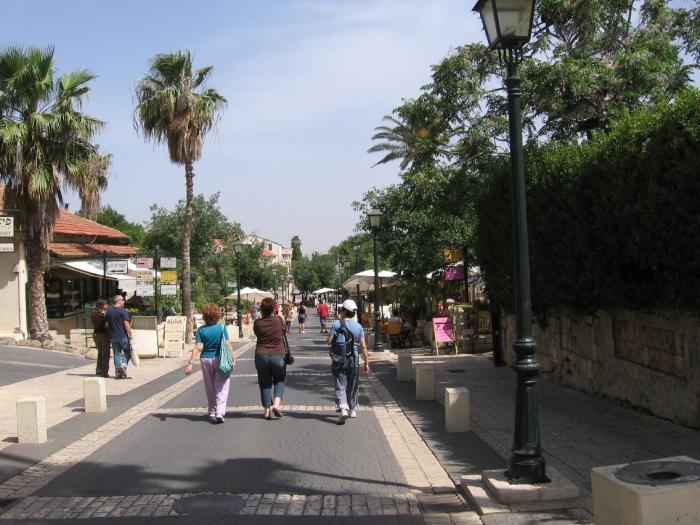
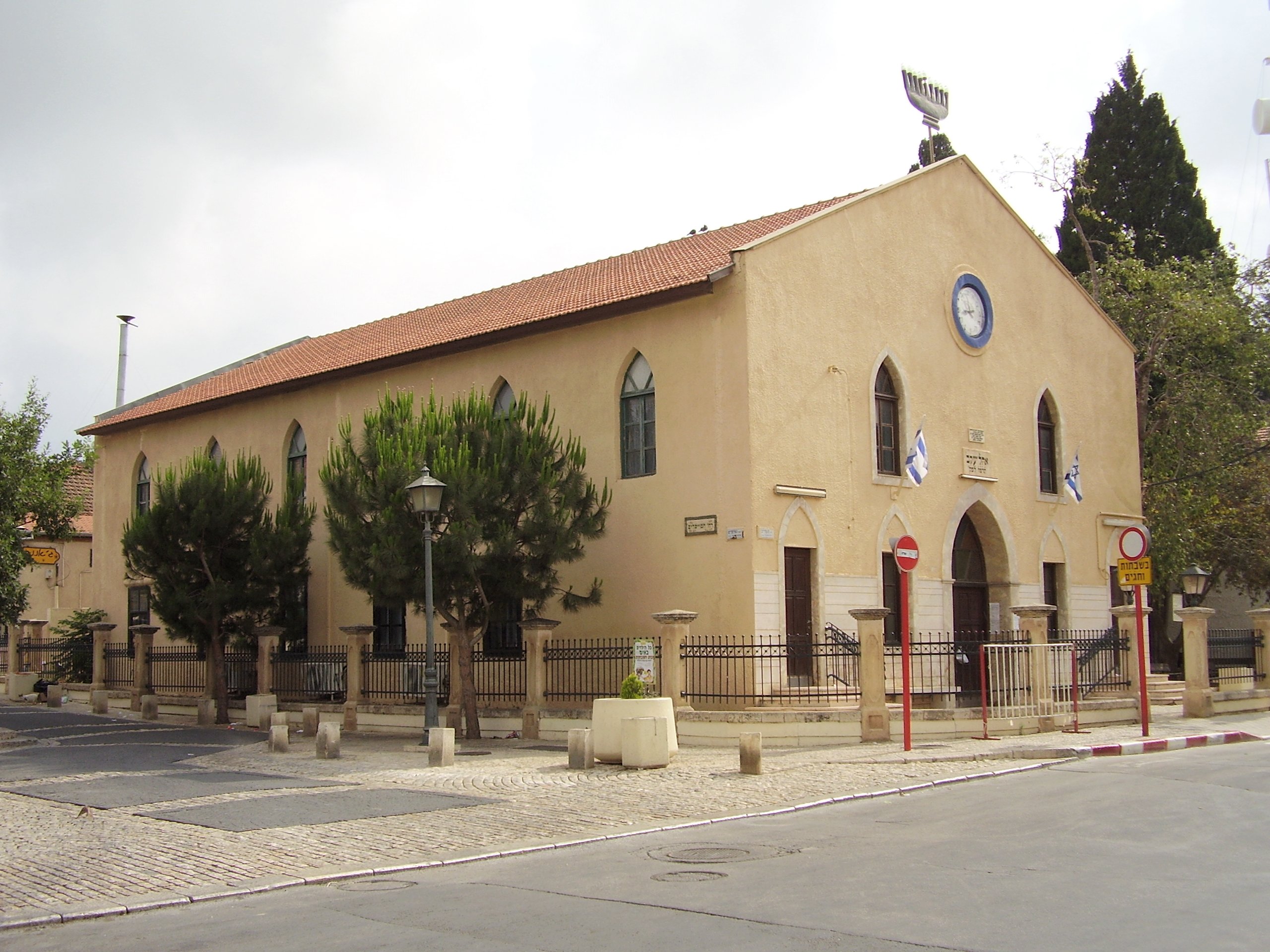
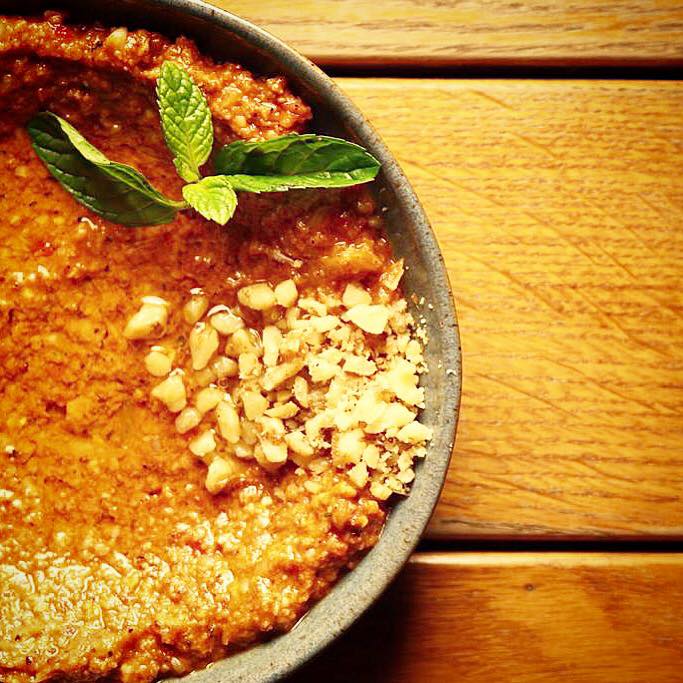

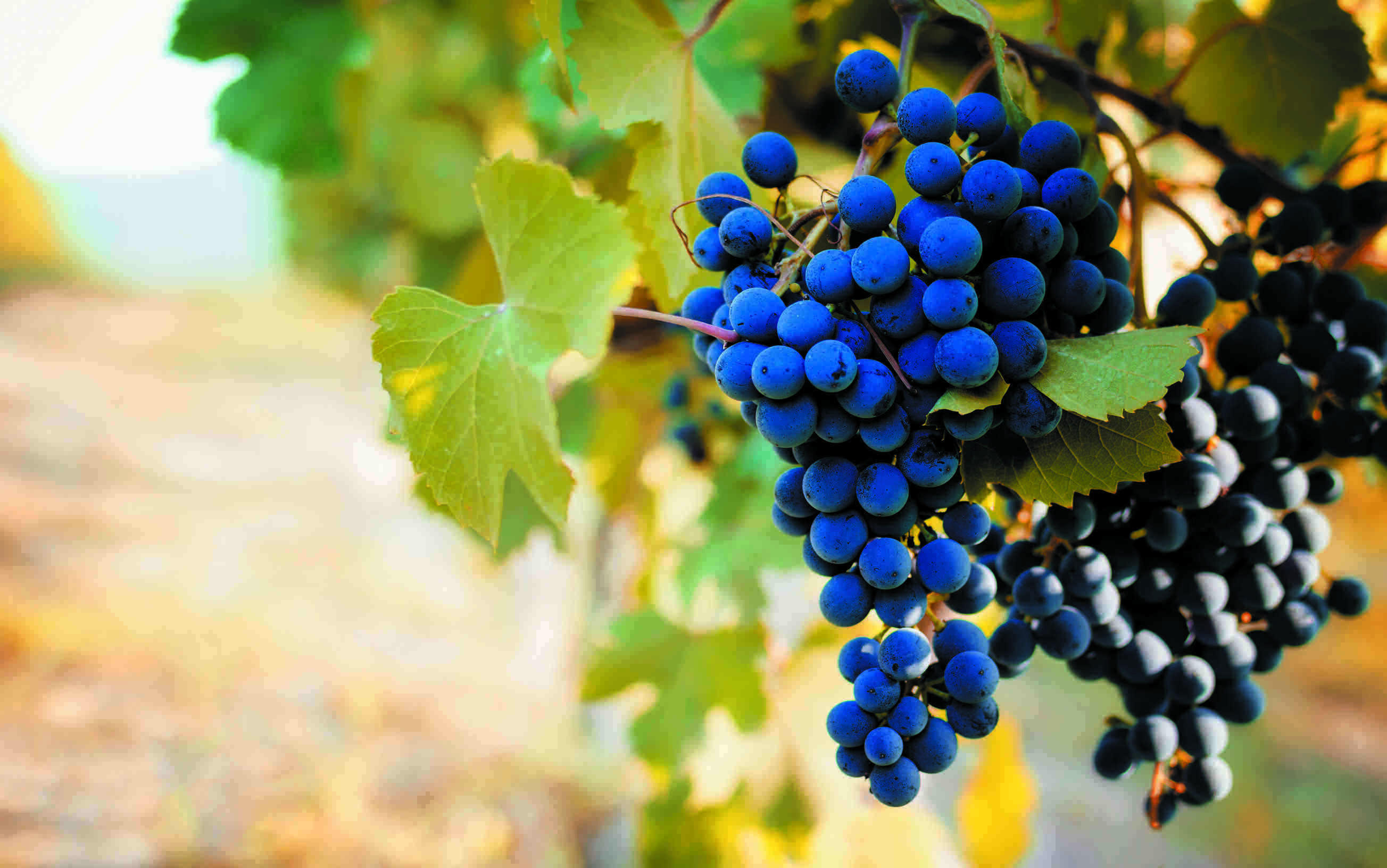
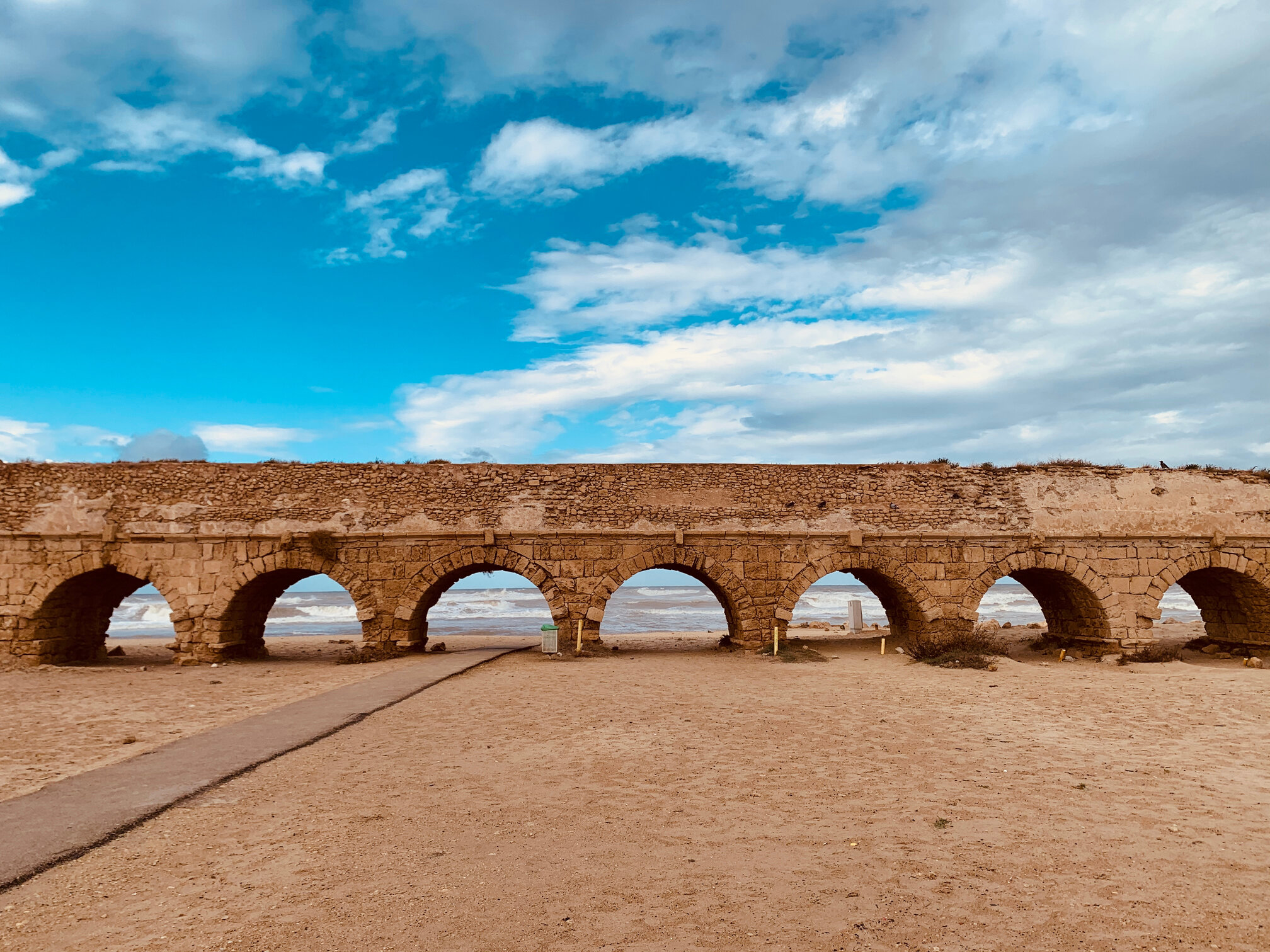
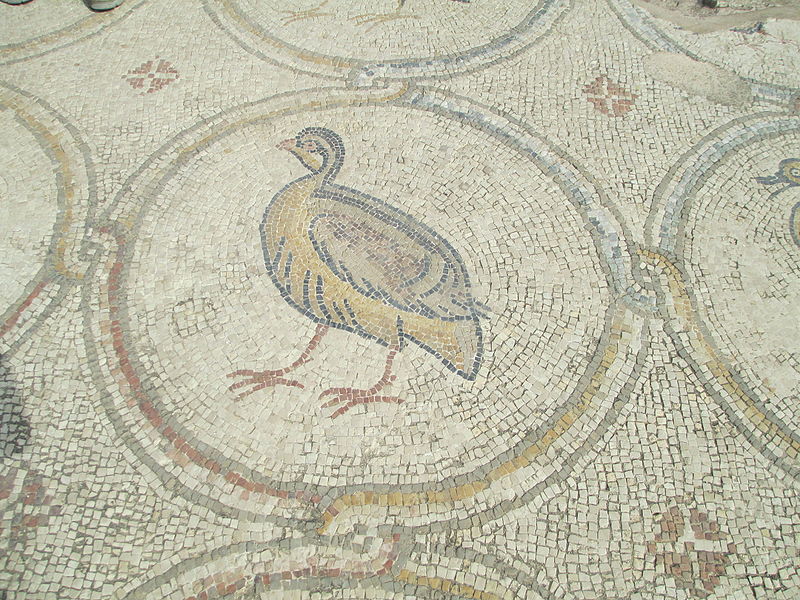
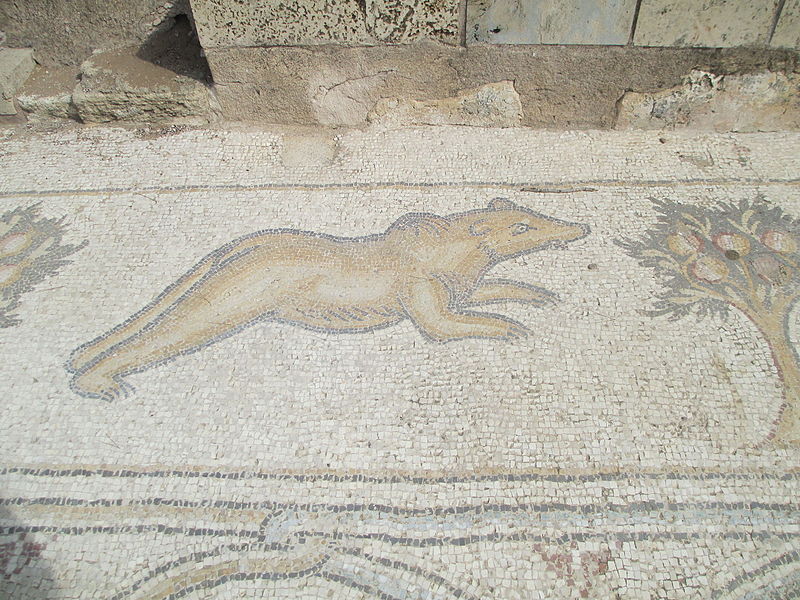
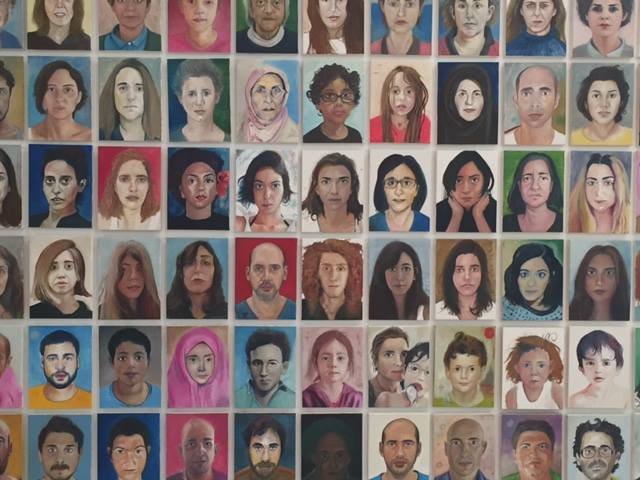

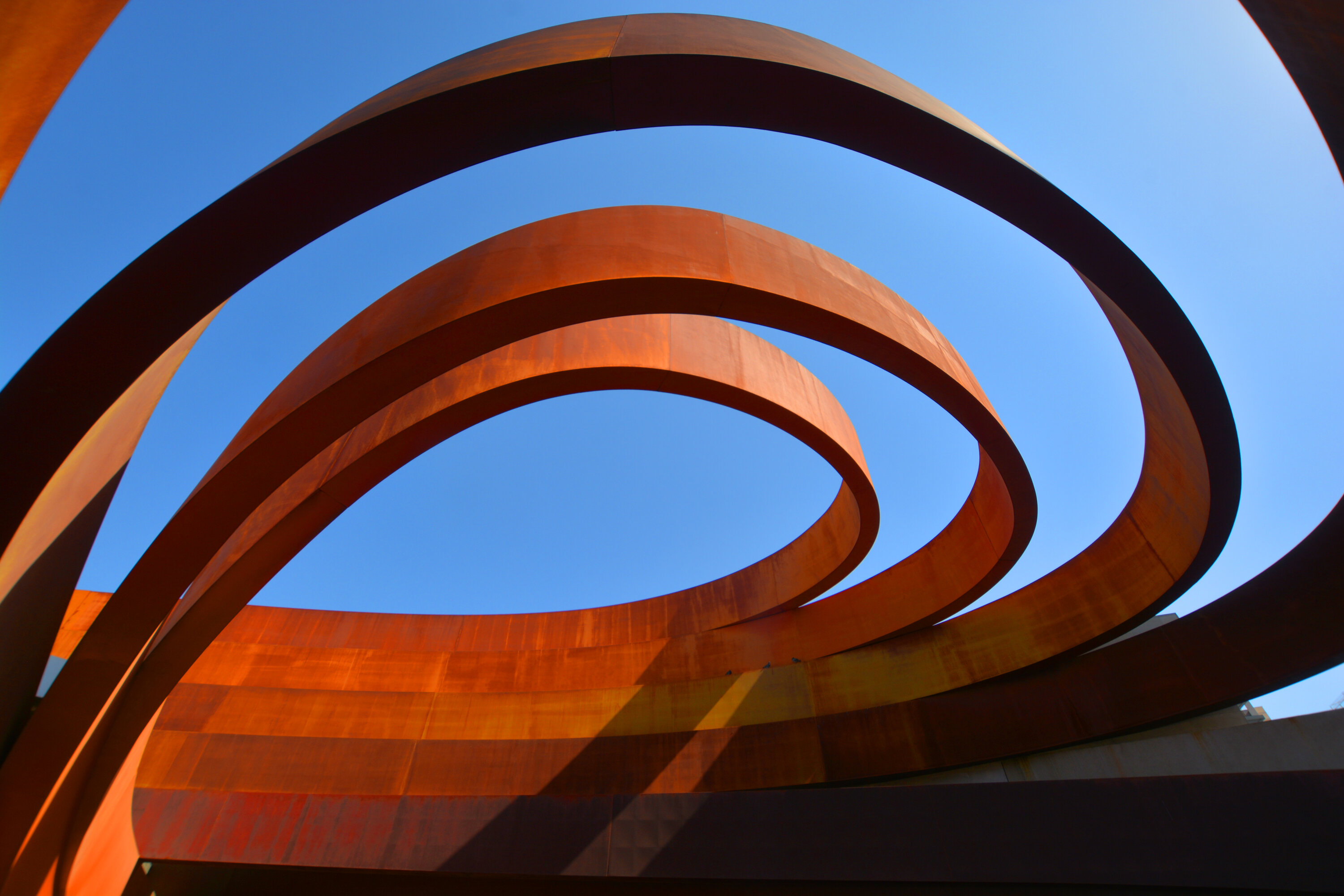
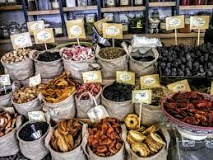
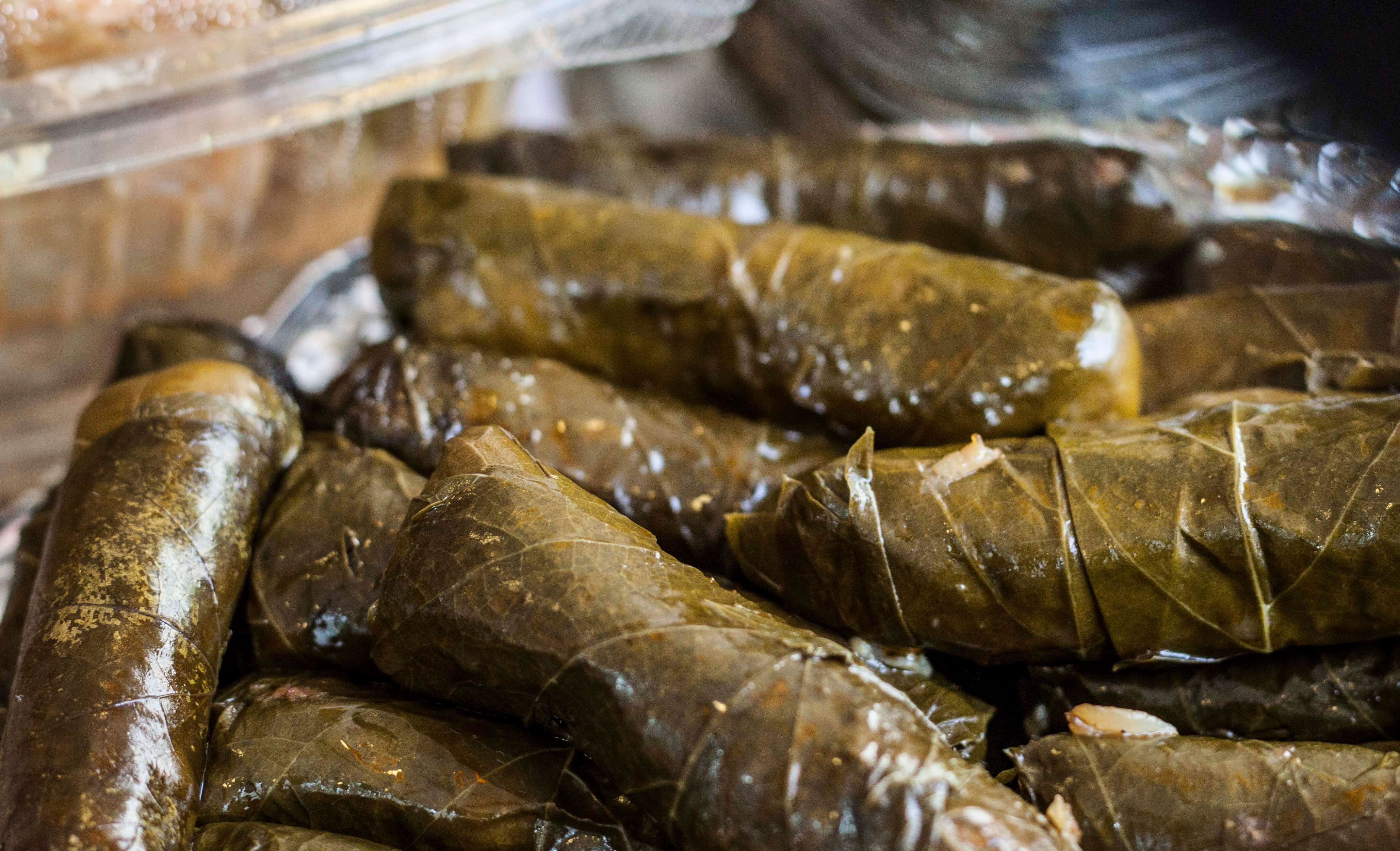
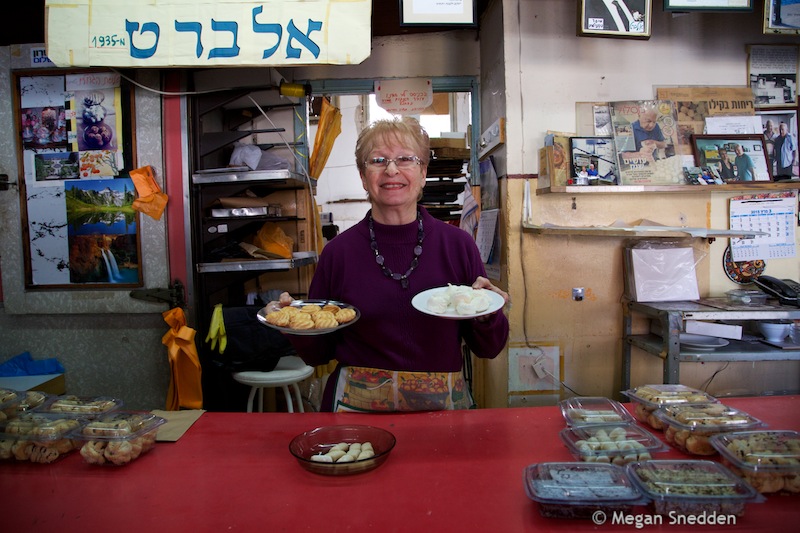

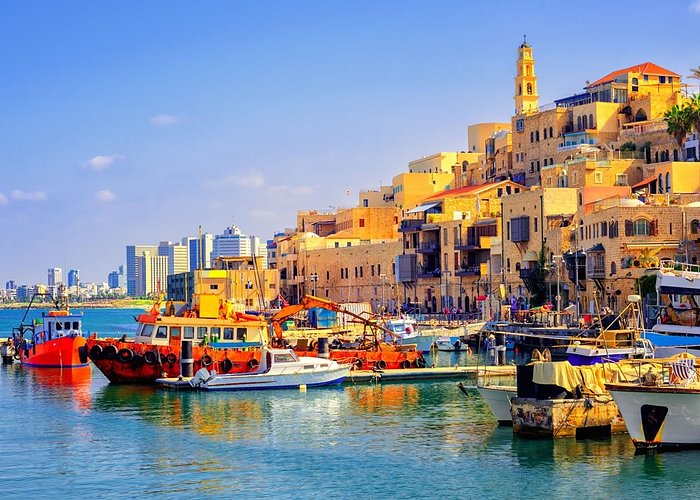
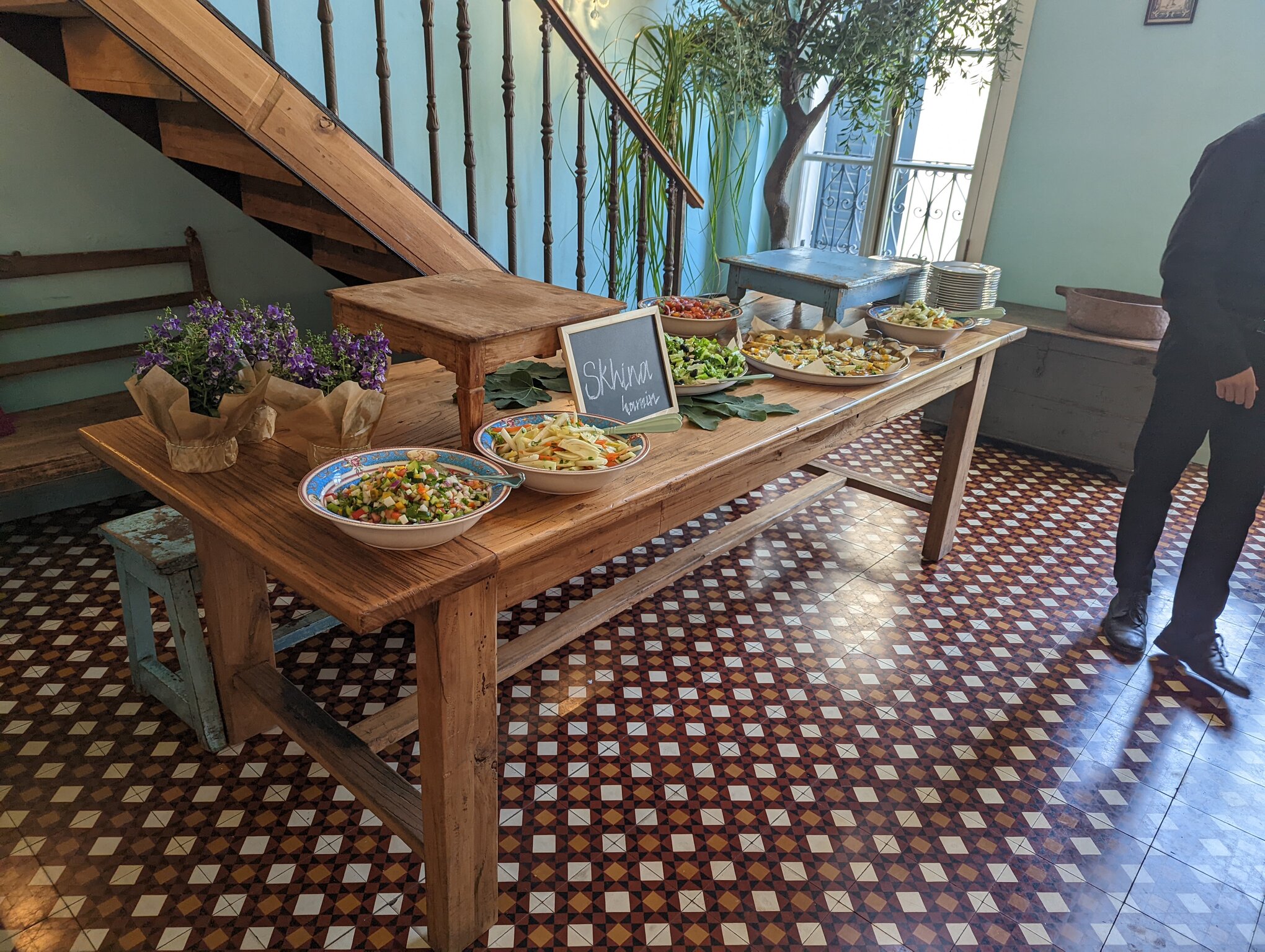
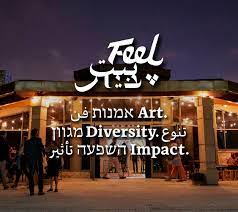
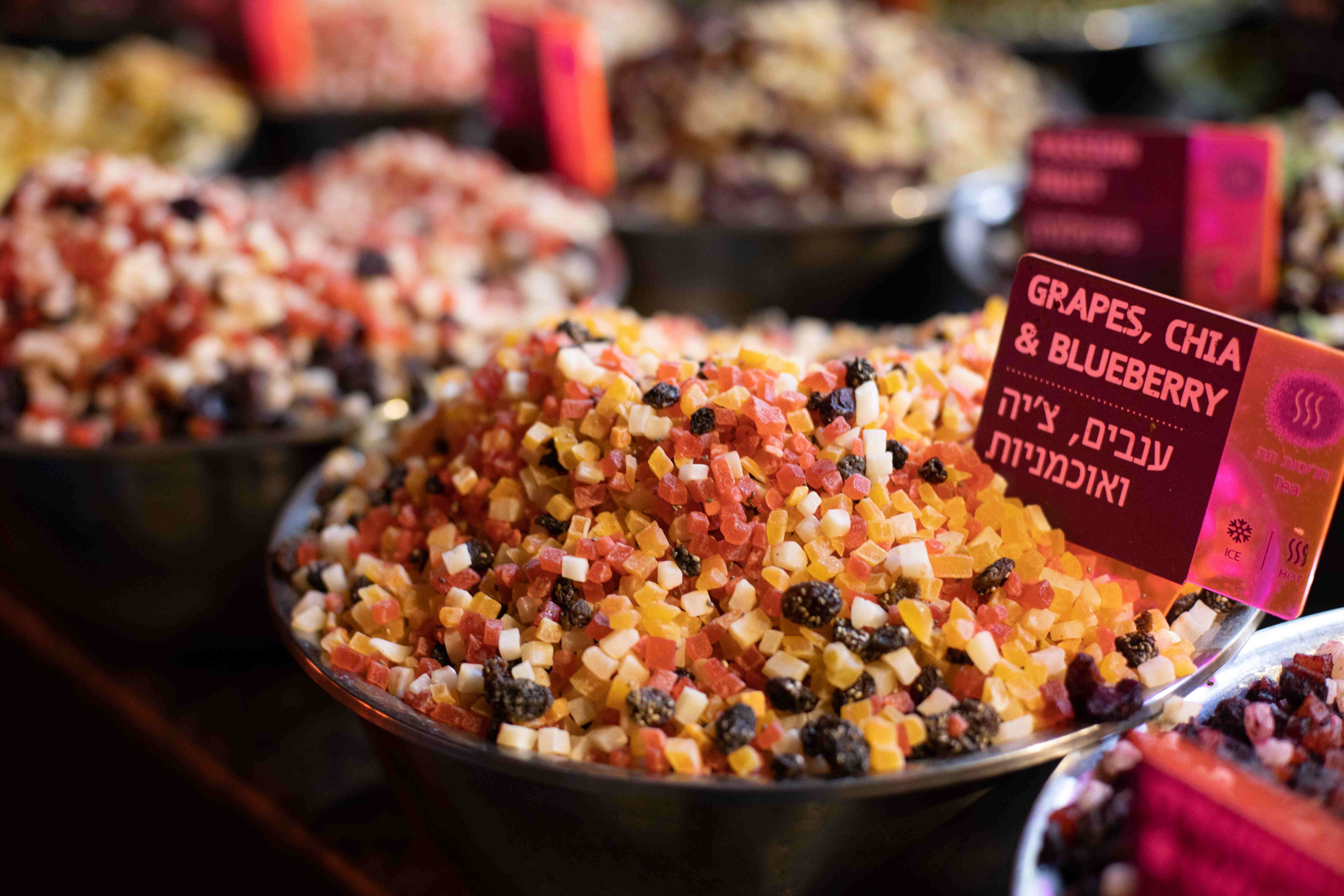
465.jpg)
